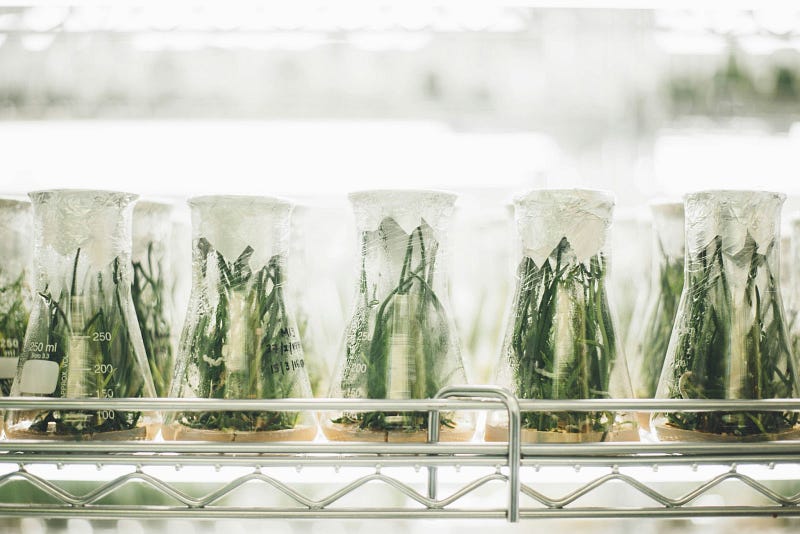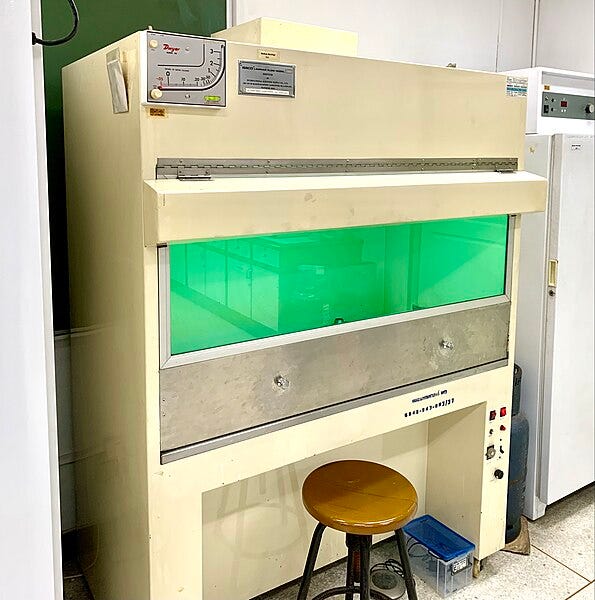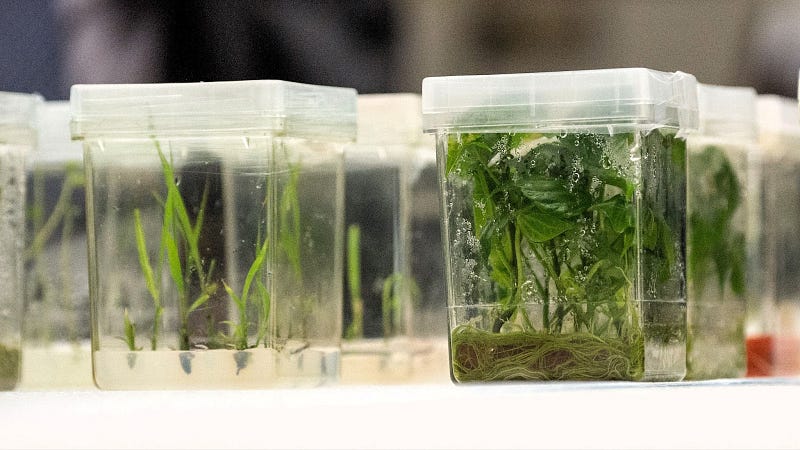Will Plant Tissue Culture Succeed? Exploring Its Impact and Future
Written on
Chapter 1: Understanding Tissue Culture
Prepare to delve into a fascinating and somewhat contentious subject: tissue culture. This innovative technique in plant propagation is gaining traction due to its potential to generate numerous plants in a compact space while significantly reducing the risk of propagation failures. Join us as we uncover the intricacies of tissue culture, its historical evolution, and its operational mechanics.
I recently discussed this topic with my mother, who has extensive experience in medical laboratories where human tissue samples are cultured for diagnostic purposes. Her insights illuminate the parallels between human and plant tissue culture.
To initiate the process, a nutrient-rich agar medium is prepared in a sterile environment. This involves extracting sterile samples from plant stem cells—often a node—within a laminar flow hood that keeps airborne contaminants at bay.
Laminar flow cabinets, also known as tissue culture hoods, are crucial for professionals requiring a clean workspace, such as those in semiconductor manufacturing. It's important to differentiate these from fume hoods, which are designed to vent hazardous air away from users, while laminar hoods direct air towards the user, away from the samples.

Are these specialized hoods necessary? Absolutely. This method, referred to as micropropagation, entails isolating a plant stem-cell sample (known as extant) from its source. These undifferentiated cells can be found in plant nodes, and all tools must be sterilized between uses.
Before introducing the extant into the sterile workspace, it undergoes sterilization. The extant is then placed in sealed containers filled with agar—similar to Petri dishes—composed of sugar, water, hormones, and essential nutrients like NPK. The specific agar formulations can be tailored to the needs of different plant species, but the fundamental premise remains constant: promoting rapid cell growth.
However, it's crucial to maintain sterility, as bacteria and fungi can also proliferate quickly. The sealed containers are placed under dim lighting, allowing a mass of undifferentiated cells to develop over several weeks where the extant meets the agar. Eventually, this mass divides into plantlets that can either be potted or further cultured.

Chapter 2: The Historical Context of Tissue Culture
The modern practice of tissue culture can trace its origins back to the early 20th century. Austrian botanist Gottlieb Haberlandt was the first to isolate plant stem cells and cultivate their tissues. His father, Friedrich J. Haberlandt, was already a prominent figure in botany, known for introducing soybeans to Europe from America. Gottlieb's son, Ludwig, became a significant figure in reproductive physiology and is often referred to as the 'grandfather' of the birth control pill.
Following Gottlieb, various scientists continued to explore plant tissue culture. In 1934, Gautheret successfully multiplied cells from culture, suspecting that a deficiency of the hormone auxin was inhibiting cell division after a year and a half. Kogel had previously isolated auxin in the late 1920s, and by 1939, Gautheret and White discovered that adding auxin could stimulate growth. By the 1950s, other hormones and growth regulators known as cytokinins were identified, with Murashige and Skoog developing a defined plant culture medium by 1962.

Chapter 3: Advantages of Micropropagation
Those engaged in plant tissue culture can attest to the numerous advantages it offers, though it isn't without its challenges. Let's explore both sides of the equation. The benefits include rapid growth, minimal space requirements, and the ability to produce exact replicas of plants. Feel free to share your thoughts in the comments.
To begin with, the capacity for exponential growth is remarkable; a single extant can yield multiple plants. By taking several samples from one plant, each can potentially produce five or more offspring, creating a multiplier effect.
This efficiency fosters sustainability—if one plant can generate numerous propagates, the incentive to overharvest decreases, potentially leading to reduced poaching. Furthermore, tissue culture allows for year-round cultivation.
Starting from mere cells enables cultivators to stack jars in limited space, as opposed to full-grown plants that require significantly more room. This translates into economic benefits for businesses as well.
Much of the tissue-cultured material consists of houseplants, with variegation being highly prized. Unlike stem propagation, which can lead to genetic reversion, micropropagation is better at preserving variegation. Additionally, it can help regenerate healthy specimens from diseased plants, although other propagation methods may achieve similar results.
The advantages extend to biodiversity preservation and preventing species loss. Even amidst habitat destruction and human encroachment, tissue culture can play a vital role in conserving species.

Chapter 4: Challenges in Tissue Culture
However, there are some downsides to consider. The initial setup can be quite costly, from purchasing laminar hoods to acquiring hormones and other necessary materials.
Moreover, tissue culture necessitates a sterile working environment. If you have children, pets, or a generally messy space, achieving the required cleanliness could be problematic. This adds another layer of complexity to the process.
In addition to the financial investment and need for sterility, establishing a lab requires specialized training and ongoing monitoring of specimens.
Interestingly, most live plants available for purchase today are derived from tissue culture, demonstrating its widespread adoption despite its pros and cons.
To provide further insight into tissue culture, check out this video titled "Unveiling the Truth About Tissue Culture: Pros, Cons, and Controversies." It discusses the various facets of tissue culture and its implications.
Chapter 5: Conclusion
The evolution of applied science in tissue culture is fascinating. From Haberlandt’s initial discovery of differentiated plant cells to Kogel's identification of auxin and Gautheret and White’s work on growth stimulation, the field has advanced significantly. Murashige and Skoog's contributions to plant culture media have laid the groundwork for modern practices.
While this exploration may not fully capture the criticisms of tissue culture, its advantages are undeniable. Its speed, efficiency, and scalability set it apart from traditional techniques, unbound by the limitations of farmland, space, or time.
However, it's essential to recognize that micropropagation demands specialized knowledge and access to laboratory facilities, which many individuals may lack. The costs associated with starting this process can range from $200 upward, depending on one’s expertise and resourcefulness.
In conclusion, it's clear that tissue culture is poised for success. In fact, it has already achieved significant milestones, often unnoticed by the general public.
For those interested in practical applications, here's another informative video titled "Plant Tissue Culture 101 | With Demonstration! | The 'Breaking Bad' of Houseplants!" that illustrates how to start tissue culture affordably.